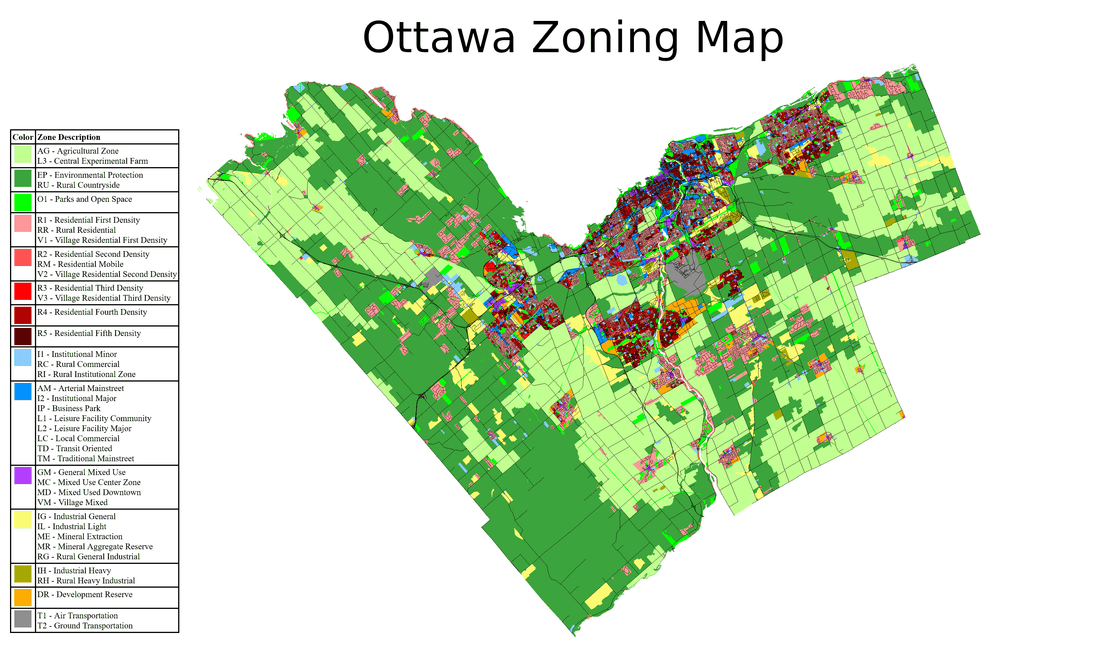Municipalities have a wide array of zones distributed over their area based on the historical or desired use of the land. (image credits)
- Zoning will determine if you are allowed to build a glampsite and how you go about building it
- Different land use types have their own advantages and drawbacks
- Zoning can be changed but it may incur significant time and cost
- We use information primarily from Canada, check your local regulations
Overview
To some, there is a preconception that owning a piece of rural land is like having your own mini-kingdom where you can do as you please. Unfortunately, this is false. Most rural properties are still part of a municipality and with that comes zoning and by-laws. Only in the most remote, unincorporated places is there more leeway to build without approval and oversight.
As mentioned in a previous article, zoning is one of the first things you should investigate before you begin any talks to obtain land for your glamping site. With zoning and by-laws changing from town to town, it’s essential to perform due-diligence on every prospective property.
Other than zoning, glamping operators should also look out for: requirements from conservation authorities (e.g. forest/watershed management), requirements from other levels of government (e.g. drainage rights, water monitoring) and requirements from private organizations (e.g. insurance).
Before any major construction begins, you would be required to contact the municipality to submit formal drawings and site plans. We can help with providing drawings of the geodesic dome.
The fact that geodesic domes are semi-permanent structures gives them access to more zones and helps to relieve them of more onerous requirements of structures with a foundation.
Types of Zoning that Allow Glamping
Rural
This zone is one of the most broad. With larger rural properties, land owners typically use their site (or parts of it) for business. With large distances between neighbours, there is also less of a need to restrict certain property uses which would be considered nuisance in an urban setting.
Rural land allows for glamping, however there may be restrictions on the size and nature of the operation. A common ethos of zoning rules is to set the character of an area. It governs the aesthetics as well as function. In a city, this might mean rules that incentivize a busy downtown. Rural land strives to achieve the opposite. In order to maintain character and low traffic, regulations may dictate: setbacks, the number of guests, buildings, parking spaces and design choices unless thoughtfully incorporated. Trailers for example may require more design around them to elevate their aesthetics. Inversely, geodesic domes (very modern structures) may have to have more effort put in to ensure they are integrated with the landscape.
Environmental Protection
This land type would not allow for a glampsite or most other uses. It’s purpose is to protect and maintain natural ecosystems from human development. That being said, sometimes properties are large enough to have multiple zoning types. Having this as one of the zones on your land is beneficial to a glamping business which is a form of eco-tourism and therefore who’s success is tied to healthy ecosystems.
Campground
This is a specific designation in some municipalities where the region is known for natural beauty. While this seems like the perfect zone, detailed due dilligence is still required. The rules could still dictate what type of accommodation can be used on the site. For example, it might only permit impermanent tents.
Commercial
This is a broad zoning type for business uses. It is typically divided into sub types, outlining specific types of businesses.
Some of these include:
- Shoreline Area
- Resort Commercial Uses
- Rural Commercial Zone
- Waterfront Commercial Zone
- Highway and Tourist Zone
- Lodge
Different subtypes may have different requirements. Food may need to be served, there may be a minimum number of units needed, only a specific type of accommodation structure may be permitted.
Changes to Zoning
If you purchase land that doesn’t have the specific zone or sub-zone for your needs, then a municipal zoning variance or by-law amendment would need to be completed. This would cost a few thousand dollars and take a few months at the minimum. These would involve many studies, from environmental to traffic impact. While it should be avoided in the beginning, it may be necessary and helpful if expanding in the future.
Resources:
https://www.siskinds.com/drainage-rights-in-rural-ontario/
chrome-extension://efaidnbmnnnibpcajpcglclefindmkaj/https://www.meaford.ca/en/business-development/resources/Documents/Development-Status-Map/Planning-Justification-Report.pdf
https://www.parrysound.ca/business-development/planning-and-development/
https://www.seguin.ca/en/explore-play/zoning.aspx
https://www.muskokalakes.ca/en/business/planning.aspx#I-need-to-review-zoningdevelopment-requirements-minimum-frontagearea-setbacks-height-lot-coverage-etc-of-a-particular-zone-
https://nipissingtownship.com/municipal-departments/planning/
https://www.dysartetal.ca/en/build-and-invest/zoning-by-law-and-official-plan-maps.aspx
https://www.highlandseast.ca/en/do-business/zoning-by-law-and-official-plan.aspx

